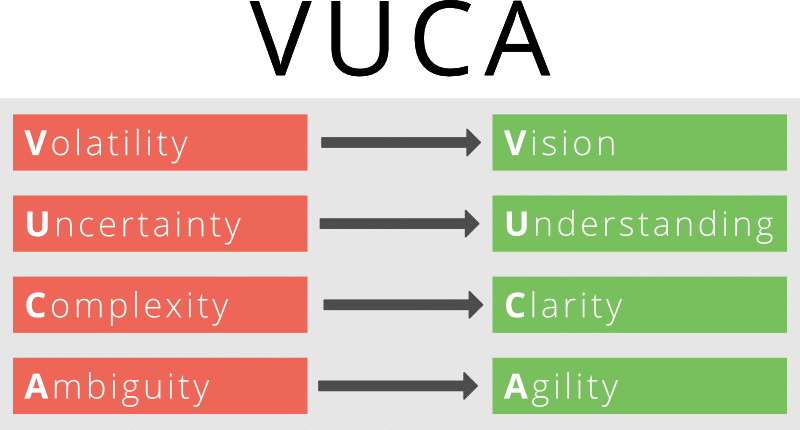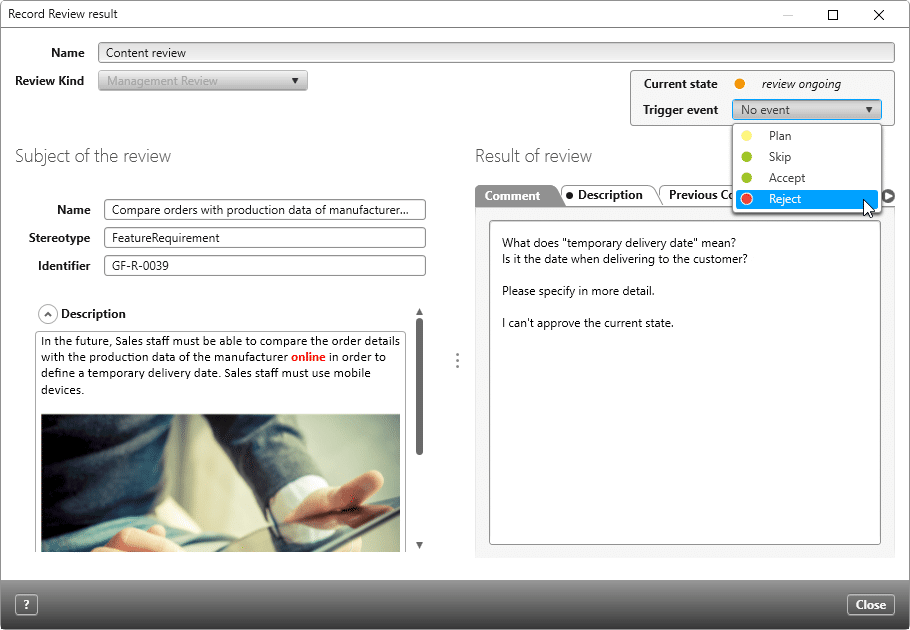VUCA. Living and Dealing with Change.
What is the VUCA world? Where does this term come from? And how can you (out)live in the VUCA world?

The acronym VUCA was created to describe a world where uncertainty rules and nothing is fixed. These circumstances are common in project management, too.
VUCA stands for Volatility, Uncertainty, Complexity and Ambiguity.
A strategy adhering to the same acronym has been developed for surviving in a VUCA world.
What Does VUCA Mean?
The abbreviation VUCA actually comes from America – to be more precise, from the American military. It describes the conditions in war zones or during the Cold War. There, the military has to deal with a world in which mostly nothing is predictable and where everything can change from one day to the next. This VUCA world is characterised by four features:
Volatility
Uncertainty
Complexity
Ambiguity
Both in project management and in the general corporate landscape, the term VUCA world has become widespread. This is because the circumstances mentioned above can also be found there; and ways and means of dealing with them must be found there as well. The VUCA world influences how you make decisions, create plans and deal with risks as well as changes.
Volatility
Volatile also means changeable, unstable or fluctuating. Prices or markets, for example, can be erratic. But people’s attitudes and opinions can also change from one day to the next. The keyword “stakeholders” and how to deal with them in projects is increasingly coming to the fore. Dangers that arise from volatility in the VUCA world include outdated information, too slow feedback or risk aversion.
Uncertainty
There is uncertainty and lack of clarity, so detailed planning is hardly possible. As a result, you have to deal with increased risks. Here in particular, the question arises as to how far classical project management can be effective. Due to the uncertainty factor in the VUCA world, there is a risk of working with incomplete information or of falling back on old, “tried and tested” methods.
Complexity
The density of information is growing more and more; and the information does not only stand for itself, but is interconnected. There are dependencies everywhere that have to be taken into account. For example, a company operates in many countries, all of which have different legal requirements or whose cultures differ enormously. The complexity of the VUCA world often leads to dealing only with the symptoms, choosing short-term fixes or falling into a “rigidity” because analysis seems impossible.
Ambiguity
In a VUCA world, there is a lack of unambiguity. Information is ambiguous, so decisions are difficult to make. This situation occurs, for example, because a company wants to enter a market that is just growing. In projects, you find ambiguity in requirements, among other things, when they are formulated unclearly. Risks of ambiguity in the VUCA world include the inability to grasp the viability of events, taking inappropriate measures or misinterpreting information.
The challenge in the VUCA world is to find a middle ground between implementing and adapting a strategy.
How to Survive in the VUCA World. Take the Test.
With the free trial of objectiF RPM, our enterprise software for more business agility »
How Do You Deal With a VUCA World?
Volatility:
When you have the feeling that everything is changing, you need one thing: a clear vision to guide you. So define the vision and keep it in mind for yourself and other project stakeholders. Also create an environment in which you can easily keep information up to date and always make it available to everyone, for example with the help of a t
Complexity:
Give clear direction and try to make processes as simple as possible.
Uncertainty:
In order to make decisions, information is needed. Therefore, ensure knowledge transfer between all stakeholders. In addition, you should deal with risks at an early stage and operate a mature risk management system.
Ambiguity:
Ensure cooperation and communication between all project participants. The best way to do this is to work in an agile way and, for example, to exchange ideas every morning in the Daily Scrum.
Incidentally, a strategy for survival in the VUCA world is also derived from the abbreviation.
Vision
Under-
standing
Clarity
Agility
The Measures in the VUCA World Summarised:
Define the vision
Give direction
Set priorities
Identify risks
Ensure communication
Ensure knowledge transfer
Ensure cooperation
How objectiF RPM Supports You in the VUCA World
With objectiF RPM, our enterprise software, you hold on to your vision. You can record stakeholders and their goals, have an overview of the effects of changes in their wishes and always work with the latest information. You create understanding of your ideas among all stakeholders by easily sharing your project content such as requirements, use case diagrams or documents, or by automatically sending emails when there are changes. Clarity is achieved, for example, through a review workflow during requirements and risk identification. And by working with backlogs, you apply the ideas of agility – new priorities can be easily set there. This is how you can survive in the VUCA world.

